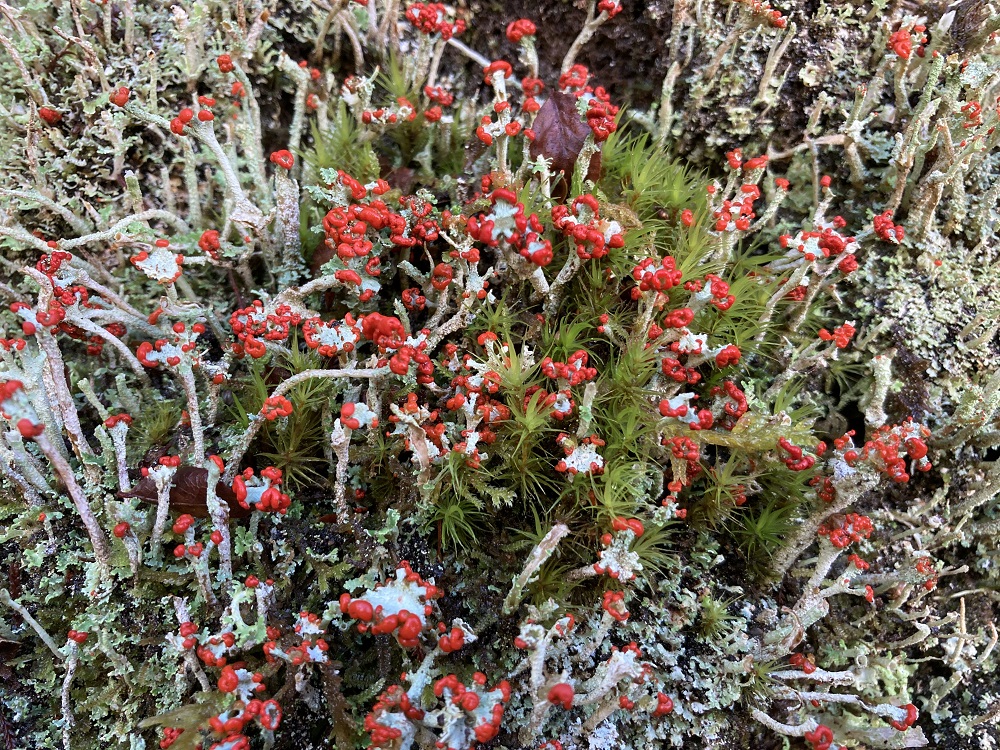Image

Devils matchsticks Cladonia © April Windle
Growth forms
Lichens take very different forms. In almost all cases these are determined by the fungal partner, which produces the visible structure of the thallus that contains and supports its photosynthetic partner.
- Leprose - a diffuse powdery mass of fungal hyphae and algal cells, with little or no structure.
- Crustose - a thin crust growing on or in the substrate, and which cannot be detached from it. They may be areolate (divided into islands by cracks in the thallus). An upper cortex protects the algal layer in the medulla beneath, and there is often a differently coloured ring of actively growing fungal hyphae round the margin (the prothallus).
- Placodioid – crustose, but with lobes towards the margin.
- Squamulose – small scales, often overlapping, attached at one edge.
- Foliose - flattened and leaf-like, with distinct upper and lower surfaces. The upper surface bears the photosynthetic layer and, often, the reproductive structures. The lower surface may have rhizines or other structures to attach to the substrate.
- Fruticose - shrubby and attached to substrate at a single point. Branches may be rounded or flattened.
- Combinations, e.g. Cladoniform - a primary thallus of squamules or granules, which develops a secondary thallus of cup, spike or tree-shaped podetia.
A few lichens follow the morphology of the algal partner, such as Ceonogonium, whose hyphae encase the individual filaments of Trentopohlia.